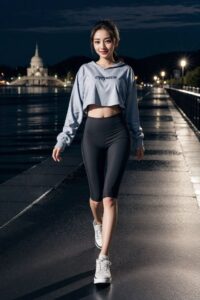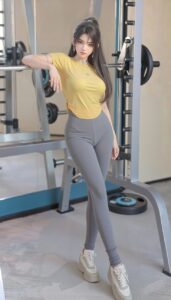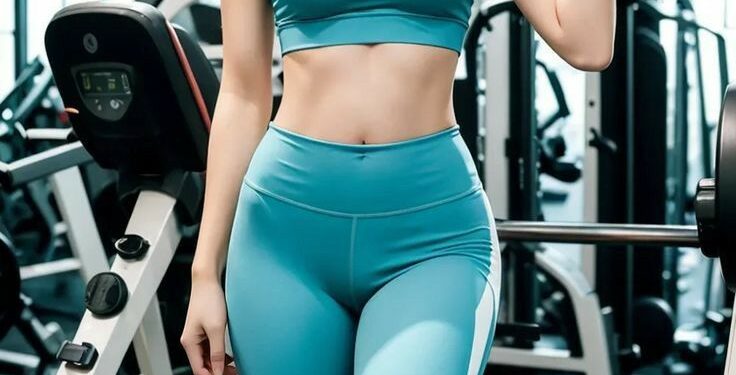Embark on a journey into the fascinating world of beauty trends forecasted by AI-created faces. Discover how artificial intelligence is revolutionizing the beauty industry by predicting trends with unparalleled accuracy and insight.
As we delve deeper, we will explore the innovative ways in which AI technology generates faces to forecast upcoming beauty trends, shaping consumer preferences and industry standards.
Introduction to AI-Created Faces in Beauty Trends
AI-created faces play a significant role in predicting beauty trends as they provide a glimpse into the future of what beauty standards may look like. By utilizing artificial intelligence technology, these faces are generated to reflect potential changes in makeup, hairstyles, and overall aesthetics that may become popular in the beauty industry.
Utilization of AI Technology for Trend Forecasting
AI technology analyzes vast amounts of data from social media, fashion shows, and beauty trends to create realistic faces that embody the predicted trends. This data-driven approach allows for a more accurate representation of the potential shifts in beauty standards.
- AI algorithms can identify patterns and correlations in data to forecast upcoming beauty trends.
- Generated faces showcase how these trends may manifest in real-life applications, influencing consumer preferences and industry practices.
Influence of AI-Created Faces on Beauty Trends
AI-created faces have already impacted beauty trends by offering a glimpse into unconventional and innovative styles that may gain popularity in the future. For example, these faces have inspired the development of new makeup techniques, hair colors, and aesthetic preferences that align with the digitally generated trends.
- Brands and beauty influencers often look to AI-created faces for inspiration when launching new products or campaigns.
- Consumers may be more inclined to try out unique beauty looks that are validated by AI predictions, leading to a shift in the overall beauty landscape.
Utilizing AI in Identifying Emerging Beauty Trends

AI has revolutionized the beauty industry by providing valuable insights into emerging trends that shape consumer preferences and product development. By leveraging advanced algorithms and machine learning techniques, AI can analyze vast amounts of data to forecast upcoming beauty trends with remarkable accuracy.
Process of AI in Identifying Emerging Beauty Trends
AI collects and processes data from various sources such as social media platforms, beauty websites, fashion blogs, and consumer reviews. It then applies natural language processing and image recognition to identify patterns and trends in consumer behavior, preferences, and product usage.
Through this analysis, AI can detect shifts in consumer interests, popular ingredients, color schemes, and beauty techniques.
How AI Analyzes Data to Predict Beauty Trends
AI algorithms use predictive modeling to forecast future beauty trends based on historical data and current market dynamics. By recognizing correlations and patterns in the data, AI can predict which beauty trends are likely to gain traction in the near future.
This allows beauty brands to stay ahead of the curve and tailor their products and marketing strategies to meet evolving consumer demands.
Accuracy and Reliability of AI-generated Forecasts
AI-generated forecasts in the beauty industry have shown impressive accuracy and reliability. By analyzing large amounts of data and identifying subtle trends that may go unnoticed by human analysts, AI can provide valuable insights that help beauty brands make informed decisions.
While no forecasting method is foolproof, AI has proven to be a powerful tool for predicting emerging beauty trends and staying competitive in a rapidly evolving market.
Impact of AI-Created Faces on Consumer Preferences
AI-created faces have a significant impact on consumer preferences in beauty products
. These virtual faces, generated by artificial intelligence algorithms, play a crucial role in shaping trends and influencing consumer behavior in the beauty industry.When consumers are exposed to AI-generated beauty trends, they are often intrigued by the innovative and futuristic nature of these trends.
The flawless and idealized features of AI-created faces can create a sense of aspirational beauty standards, leading consumers to seek out products that promise similar results.On a psychological level, the use of AI-generated faces can evoke feelings of trust and reliability among consumers.
The precision and consistency of AI algorithms in predicting trends and identifying popular beauty looks can instill confidence in consumers that the products associated with these trends will deliver the desired results.In comparison to traditional trend forecasting methods, such as celebrity endorsements or expert opinions, AI-generated trends have the advantage of being data-driven and unbiased.
Consumers may perceive AI-generated trends as more objective and inclusive, as they are based on a wide range of data points and not influenced by personal biases or subjective opinions.Overall, AI-created faces have the potential to revolutionize the beauty industry by providing accurate insights into consumer preferences and shaping the future of beauty trends in a more data-driven and inclusive manner.
Ethical Considerations in AI-Driven Beauty Trend Forecasting

When it comes to using AI-created faces in beauty trend forecasting, there are several ethical considerations that need to be taken into account. One of the main concerns is the issue of diversity, representation, and inclusivity in AI-generated beauty trends.
As AI algorithms are trained on existing data, there is a risk of perpetuating biases and stereotypes present in the training data, leading to a lack of diversity in the trends identified.
Concerns Regarding Diversity and Inclusivity
- AI algorithms may not be able to accurately capture the full spectrum of beauty across different ethnicities, skin tones, and body types, leading to a limited representation in beauty trends.
- This lack of diversity can reinforce existing beauty standards and ideals, excluding marginalized groups and promoting homogeneity in the industry.
- Furthermore, the use of AI-created faces in beauty trend forecasting may inadvertently prioritize certain features or characteristics over others, further perpetuating beauty norms that may not be inclusive or representative of all individuals.
Controversies in the Beauty Industry
- One example of a controversy in the beauty industry related to AI-driven trend forecasting is the issue of cultural appropriation. AI algorithms may not always be sensitive to the cultural significance of certain beauty trends, leading to the misrepresentation or appropriation of cultural practices.
- Additionally, there have been concerns raised about the privacy and consent of individuals whose faces are used in AI-generated beauty trends without their explicit permission, raising questions about data protection and ethical use of personal information.
- Overall, the ethical considerations surrounding the use of AI-created faces in beauty trend forecasting highlight the importance of ensuring fairness, transparency, and inclusivity in the development and deployment of AI technologies in the beauty industry.
Ultimate Conclusion

In conclusion, the impact of AI-created faces on beauty trends is undeniable, reshaping the way we perceive and engage with beauty products. As AI continues to evolve, we can expect an exciting future where trends are not just followed but predicted with precision and creativity.
FAQ Section
How accurate are AI-generated forecasts in predicting beauty trends?
AI-generated forecasts are exceptionally accurate due to their ability to analyze vast amounts of data and identify emerging patterns and trends.
What ethical considerations surround the use of AI-created faces in beauty trend forecasting?
Ethical considerations include concerns related to diversity, representation, and inclusivity in AI-generated beauty trends, ensuring that the industry remains inclusive and respectful of all individuals.
 AI has revolutionized the beauty industry by providing valuable insights into emerging trends that shape consumer preferences and product development. By leveraging advanced algorithms and machine learning techniques, AI can analyze vast amounts of data to forecast upcoming beauty trends with remarkable accuracy.
AI has revolutionized the beauty industry by providing valuable insights into emerging trends that shape consumer preferences and product development. By leveraging advanced algorithms and machine learning techniques, AI can analyze vast amounts of data to forecast upcoming beauty trends with remarkable accuracy.
 When it comes to using AI-created faces in beauty trend forecasting, there are several ethical considerations that need to be taken into account. One of the main concerns is the issue of diversity, representation, and inclusivity in AI-generated beauty trends.
As AI algorithms are trained on existing data, there is a risk of perpetuating biases and stereotypes present in the training data, leading to a lack of diversity in the trends identified.
When it comes to using AI-created faces in beauty trend forecasting, there are several ethical considerations that need to be taken into account. One of the main concerns is the issue of diversity, representation, and inclusivity in AI-generated beauty trends.
As AI algorithms are trained on existing data, there is a risk of perpetuating biases and stereotypes present in the training data, leading to a lack of diversity in the trends identified.
 In conclusion, the impact of AI-created faces on beauty trends is undeniable, reshaping the way we perceive and engage with beauty products. As AI continues to evolve, we can expect an exciting future where trends are not just followed but predicted with precision and creativity.
In conclusion, the impact of AI-created faces on beauty trends is undeniable, reshaping the way we perceive and engage with beauty products. As AI continues to evolve, we can expect an exciting future where trends are not just followed but predicted with precision and creativity.


